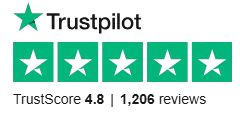
Differences Between Secured And Unsecured Loans
Deciphering Secured vs. Unsecured Business Loans: What UK SMEs Need to Know Navigating the business loans market in the UK can often feel like solving…
We have partnered with Funding Options so you can compare over 120 lenders to find the right finance partner for you.

Some of the lenders compared….
At Simply Business Loans we have partnered with Funding Options to bring you access to over 120+ lenders. Funding Options provides you with one simple application process that delivers uniquely tailored loan solutions for your business. Their technology, Funding Cloud, will accurately validate your business profile, matching you to the industry’s largest lender network.
Start with how much you need to borrow, what it’s for, and basic information about your business.
Smart technology at Funding Options will compare up to 120+ lenders and match you with matched finance options
Help is provided to you during application process to receiving your funds. It’s free to apply and it doesn’t affect your credit score
Invoice discounting is a popular form of invoice financing that allows businesses to unlock immediate cash by using unpaid invoices as collateral. Unlike other financing methods, invoice discounting gives businesses the flexibility to retain control over their own sales ledger and credit management. This guide explains how invoice discounting works, who it’s suitable for, and how it compares to other types of invoice financing, such as invoice factoring and selective invoice finance.
Invoice discounting is a financing solution where a business borrows money against its outstanding invoices. Instead of waiting for customers to pay, the business receives an advance from a lender (usually around 80% to 90% of the invoice value). Once the customer settles the invoice, the business repays the lender the amount borrowed, minus any fees.
Unlike invoice factoring, the business retains control over its sales ledger and is responsible for collecting payments from customers. This form of financing is typically used by businesses that have established credit control systems and wish to maintain confidentiality in their customer relationships.
Business Issues an Invoice: The business provides goods or services to a customer and issues an invoice.
Borrowing Against the Invoice: The business sells the invoice to a lender in exchange for an upfront cash advance.
Business Manages Collections: The business continues to manage its sales ledger and collects payment from customers directly.
Repayment: Once the customer pays the invoice, the business repays the lender, minus any fees and interest.
This allows businesses to access working capital quickly, improving cash flow without having to wait for customers to pay their invoices.
Invoice discounting is generally suitable for established businesses that have a reliable and efficient credit control system in place. It’s a good choice for companies that want to retain control of their customer relationships and manage their own collections. This financing option works well for businesses with a consistent flow of invoices, as the lender will often assess the overall creditworthiness of the business and its customers.
Control Over Collections: The business maintains responsibility for managing customer payments, which helps to preserve customer relationships.
Confidentiality: Unlike invoice factoring, where the third-party provider handles collections, invoice discounting is confidential. Your customers may not even know you’re using a financing solution.
Flexibility: Invoice discounting is based on the value of outstanding invoices, so businesses can access funding as their sales grow.
No Debt Added to Balance Sheet: Since invoice discounting is not a loan, it doesn’t add to the company’s debt load, unlike traditional borrowing options.
Requires Strong Credit Control: Since the business is responsible for collecting payments, it’s important to have a solid credit control system in place. If collections are mismanaged, it can lead to cash flow issues.
Cost: Invoice discounting fees can vary depending on the volume of invoices and the creditworthiness of the business’s customers. For businesses with a smaller volume of invoices or poor credit history, costs can be higher.
Dependence on Customer Payments: If customers do not pay on time, the business may struggle to meet repayment obligations to the lender.
Eligibility Criteria: Invoice discounting providers may require a business to have a certain size or track record, and it may not be available to start-ups or smaller businesses with limited invoicing history.
While invoice discounting is ideal for businesses that want to retain control over their invoicing and collections, it’s worth considering how it compares to other forms of invoice financing:
Invoice Factoring: Unlike invoice discounting, invoice factoring involves selling invoices to a third party (the factor), which then assumes responsibility for collecting payments. This can be beneficial for businesses that prefer to outsource credit control but may result in a less confidential arrangement.
Selective Invoice Finance: Selective invoice finance allows businesses to select specific invoices to finance, offering more flexibility compared to full-scale factoring or discounting. This option is suitable for businesses that don’t want to factor or discount all their invoices but still need access to short-term working capital.
Invoice discounting is a viable financing option for businesses that need to maintain control over their customer relationships while unlocking cash flow from unpaid invoices. It is best suited for businesses with strong credit control processes and reliable customers. Although it offers confidentiality and flexibility, businesses need to be aware of the costs and the risks associated with managing collections themselves. For businesses seeking to outsource collections, invoice factoring or selective invoice finance may be more appropriate alternatives. By understanding the benefits and considerations of invoice discounting, business owners can make an informed decision that best supports their cash flow and growth objectives.

Deciphering Secured vs. Unsecured Business Loans: What UK SMEs Need to Know Navigating the business loans market in the UK can often feel like solving…

Navigating the Landscape of UK Business Loans: What You Need to Know As the backbone of the British economy, small to medium-sized enterprises (SMEs) are…

The Key Takeaways The 2024 UK budget was announced on October 30th 2024. It is the first budget of the Labour government in 14 years.…
About This Information
Our articles, guides & reviews are provided as generic information only. Any expressed view, product or service mentioned within these does not constitute as financial advice or recommendation by us.
Be mindful that information may have changed since publication.